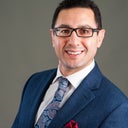Will the results last longer if there is muscle tightening?How can I be sure that my surgeon performs this?
Answers (35)
From board-certified doctors and trusted medical professionals

Dr. Amir Nakhdjevani, MBBS, MRCS, FRCS(Plast)
Specialist Registered Plastic Surgeon
Answer
More Facelift Questions
See all Facelift Q&AWE SEND PRETTY
EMAILS
What’s trending? Who’s turning heads? Which TikTok myths need busting? We’ve got you. No fluff, no gatekeeping—just real talk. Get our free, unfiltered newsletter.








